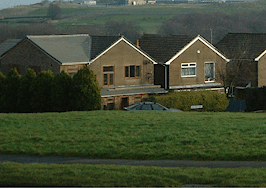In the decade since the subprime housing crisis sunk the United States into recession, triggered the foreclosure of 1.2 million homes and caused the collapse of Lehman Brothers, home values across the West Coast have fully recovered while others still struggle to rebound.
Buoyed in part by growing tech hubs in Seattle, San Jose and elsewhere, home prices in Washington, California and Oregon — three states most deeply impacted by the housing crisis in 2008 — have surged by more than 50 percent since 2013, according to a comprehensive new state-by-state analysis of the housing crisis by CoreLogic released on Thursday.
Yet scattered across the country, housing prices across Illinois in the Midwest, Florida in the South and Nevada and Arizona in the West have failed to reach pre-recession levels, and today nearly 2.5 million residential properties remain in negative equity, according to the new study.
“West Coast states, such as California, Washington and Oregon are seeing some of largest trough-to-current growth rates in home prices,” said CoreLogic Chief Economist Frank Nothaft, an author of the study, “Evaluating the Housing Market Since the Great Recession.” “Greater demand and lower supply — as well as booming job markets — have given some of the hardest-hit housing markets a boost in home prices. Yet, many are still not back to pre-crash levels.”
Housing prices nationwide plunged 33 percent during the recession, but have since returned to peak levels, rebounding 51 percent since hitting the bottom of the market, according to the analysis. The average home price is now 1 percent higher than in 2006, and the average annual equity gain hovered at around $15,000 in the third quarter of 2017, the authors write.
In California, where values plunged 42 percent, home prices are now 2 percent higher than in 2006, at the peak of the market before the recession struck, according to the analysis. In the Los Angeles metropolitan area, prices have increased by 55 percent since 2013, and in the San Jose metro area — the heart of Silicon Valley and home to Apple, Google and Facebook — prices have skyrocketed by 77 percent during the same period, according to the analysis.
“With a strong job market and high-paid workers commuting to Silicon Valley, the San Francisco metro area also experienced high growth rates, with a five-year appreciation rate topping 65 percent and an average annual equity gain of $73,217,” according to the authors of the report. “West Coast hub Seattle also experienced strong growth rates with a 68 percent five-year appreciation rate and an average equity gain of $63,641.”
Elsewhere, home prices in Colorado and Utah have recovered thanks in part to a wave of first-time millennial homebuyers, who over the past five years have helped raise home values in those states by 51 percent and 47 percent, respectively, since 2013, according to the analysis.
Still, home prices across the country, in deep pockets of the South and in the Midwest, have struggled to regain pre-recession values, according to the study. During the recession, Arizona and Florida prices plunged to 51 percent and 50 percent below their peaks and both states remain 16 percent below their peak prices as of December 2017, according to the analysis. Illinois home values, too, stand 12 percent below peak pre-recession prices.
Home prices in Nevada, meanwhile, have soared 93 percent since the recession, yet still haven’t fully recovered, having suffered a 60-percent decline in values during the downturn.
“Nevada’s growth rate is still 23 percent below its pre-recession peak, and 9 percent of mortgaged properties are still underwater,” according to the report. “This is one of the highest negative equity levels in the country, exceeded only by Louisiana which fell by just 9 percent during the crash.”













